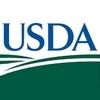Check out what is new in Poultry Industry
Find the best technical articles, forums, and videos on Poultry Industry at Engormix. Enter now and interact with the world's largest agricultural social network.
According to monitoring data provided by the China Veterinary Medicine and Feed Trading Center, the price index of major veterinary APIs is operating smoothly with relatively little volatility in the market price. Heat and humidity are unfriendly to the production of some varieties of APIs. Factories have recently arranged seasonal shutdowns for maintenance. It is expected to result in a tight supply of the related raw materials in the short term. Heavy rains and floods in northern...
Comments : 0
Recommendations: 0
One of the purposes of preheating a broiler house is to insure the litter is properly dried prior to chick placement. Research has shown that the higher the litter moisture level, the higher the level of ammonia production, potential for bacterial growth, paw damage,...
Comments : 0
Recommendations: 1
by Sam Shafer
When it comes to poultry feed, particle size makes a big difference for bird nutrition.
Research shows that chickens increase their feed intake and performance when given pelleted feed or crumbled pellets, compared with mash.
This has led researchers to wonder whether feeding crumbles could jumpstart very early chick growth and boost final broiler body weights. It is important to study this question because pellets and crumbles are more...
Comments : 0
Recommendations: 0
by Sam Shafer
Properly cooking poultry products is key to avoiding bacterial infections such as Campylobacter, so there are concerns that the recent popularity of undercooked chicken livers, often served as a pâté, could lead to foodborne illnesses.
Poultry scientists are curious whether the same concern is relevant for turkey livers—an important question as turkey consumption continues to grow in the United States.
To better...
Comments : 0
Recommendations: 0


Innovative Directions in Aflatoxin Testing Point to Measureable Gains in Quality Of Lab Data
Suggested link
Background Recently, a comprehensive review paper devoted to roles of nano-Se in livestock and fish nutrition has been published in the Nanoscale Research Letters [1]. The authors described in great detail an issue related to nano-Se production and its possible applications in animal industry and medicine. Indeed, it is well established that many molecules presented as nanoparticles have unusual behaviour due to the new properties of such particles. In fact, in most of the...
Comments : 0
Recommendations: 0
This article will make a similarity of both companies from the perspective of the meat byproducts rendering plants. Walmart is the largest and most successful retail company in American history and Kmart was its direct competitor in its early days. Walmart focused on improving its process not only in technology, but it also trained its employees so that they understood the importance of reducing costs without deteriorating the quality and their service, focusing in details. Kmart invested in...
Comments : 0
Recommendations: 1
.jpg&w=3840&q=75)

How to determine the nutritional quality of feeds and raw materials?
Suggested link
The issue of antibiotics resistance on animals has raised concerns about meat safety and human health. The banning of antibiotics- growth promoter in animal feed was announced in the EU in 2006. Other countries are starting to follow the regulation to comply with the compulsory withdrawal periods to ensure ‘antibiotics free products. Supplementation in nutrients to enhance the immunity system and lower the risk of the pathogen can help to reach the balance between maintaining animal...
Comments : 4
Recommendations: 0
Thermal stress happens when the animal leaves its thermal comfort zone, it means neither too cold nor too hot, let's say it feels good. In both of the cases, the stress due to heat and cold, the problem itself is not the temperature alone, but its relation to relative humidity level. The...
Comments : 8
Recommendations: 4
1. Introduction A previous study reported nontyphoidal Salmonella spp., Clostridium perfringens, Campylobacter spp., and Escherichia coli as some of the most important foodborne bacterial pathogens in the U.S. [1]. Overall, health-related cost associated with the food borne illness from those pathogens was estimated to be around $51.0 and $77.7 billion based on a basic and enhanced model, respectively, as described earlier [1,2]. S. enterica serotype Enteritidis (SE) that...
Comments : 0
Recommendations: 0
Introduction A 42-year history of information on Salmonella enterica serotypes indicates it is essential to rapidly determine serotype and subtype of isolates from contaminated products to improve the safety of food (Liu et al., 2011; Fabre et al., 2012; CDC-NCEZID, 2013; Lettini et al., 2014). Recently, a sequence-based method called dkgB-linked intergenic sequence ribotyping (ISR) became available to producers who want to independently screen for serotypes of S. enterica...
Comments : 0
Recommendations: 0


APIs and Vitamin MARKET - The weak demand for the APIs
Suggested link
INTRODUCTION The Centers for Disease Control and Prevention has estimated there are approximately 48 million cases of foodborne illness in the United States annually (Elaine et al., 2011a, 2011b). Salmonella and Campylobacter are the most frequently reported bacterial causes of poultry-related foodborne illness (Heyndrickx et al., 2002; Mead, 2002) because of their association with the gastrointestinal (GI) tract of chickens...
Comments : 0
Recommendations: 0
Background Investigations in reducing dietary crude protein (CP) in chickens began in the early 1940’s, which commenced nearly a century of exploration in this area of poultry nutrition research. Advances have been made, but many of the hurdles identified in the 1940’s vex poultry nutrition researchers today. Most notably, in the early 1940’s research was carried out in chickens fed various diets substituted with ingredients differing in protein and energy...
Comments : 1
Recommendations: 4
The poultry probiotic ingredients market is poised for robust growth on the back of burgeoning demand for safe and natural growth promotors for poultry. Over the years, the demand for poultry ingredients has increased significantly due to the growing inclination towards cost-effective and natural feed additives.
The product has gained significant prominence in the poultry arena as a feed additive on account of its ability to improve immunity against pathogens and maintain proper...
Comments : 0
Recommendations: 0
Introduction Endogenous protein loss, which links the gut physiology and protein nutrition, has proved to be an alluring subject of research for many years. Historically, the presence of undigested substances of digestive tract origin in the excretory products of animals and its relevance to the biological value of protein has long been known [1–3]. In poultry, the earliest work on the use of nitrogen-free diets was by Ackerson et al. [4] to study the variation in nitrogen...
Comments : 1
Recommendations: 4
General introduction: Newcastle disease (ND) Poultry farming is one of the most important livestock producing activities in the world because it supplies low-cost animal protein. Nevertheless, since its beginning, the main threat to the industry has been the occurrence of diseases that decrease production. One of the most common and detrimental avian viral diseases affecting poultry production is Newcastle disease (ND), caused by infections with virulent viruses from the genus...
Comments : 0
Recommendations: 0
INTRODUCTION Genetic selection in poultry has progressed continuously since the early 1960s, resulting in faster growth rates and higher meat production (Havenstein et al., 2003a,b). Over the past 60 years, body weight gain has increased fourfold from 1957 to 2005 with a simultaneous 50% reduction in feed conversion ratio and 79% higher Pectoralis major yield in males and 85% in females (Zuidhof et al., 2014). At the same time, the growth, development, structure, and...
Comments : 1
Recommendations: 6
Low protein (LP) diets have clear benefits for the poultry industry with regards to health, welfare and production. Dean et al., (2006) found that supplementing LP diets with glycine (Gly) and essential amino acids (AAs) can maintain performance similar to that seen on a standard protein (SP) diet. Further research into this concept proposes that supplementation of Gly precursors such as threonine (Thr) and serine (Ser) can overcome Gly deficiency in LP diets. Enzymes enabling these...
Comments : 0
Recommendations: 1
Due to the projections of accelerated growth of world population, it is essential to increase the production of proteins from animal and plant origin. Insects have been used as an alternative protein source for humans (entomophagy) and other animals because of their greater efficiency in food conversion and less environmental impact (Van Huis et al. 2013, Van Huis 2013, Van Huis 2020). Edible insect larvae contain an average of 54% protein, including essential amino acids and vitamin...
Comments : 0
Recommendations: 0
1. Introduction Contact dermatitis is an inflammation and irritation of the skin due to contact with an irritant or allergen. A common type of contact dermatitis in broiler chickens is footpad dermatitis (FPD), with necrotic lesions on the plantar surface of the central footpad [1]. When these lesions are left untreated, and environmental conditions remain the same or deteriorate, lesions will worsen, eventually encompassing the entire footpad, including the toes [2]. The...
Comments : 0
Recommendations: 0
Introduction Use of the antibiotics in feed has shown several side effects like resistance towards the drug, residue in the meat and thereby the user getting resistance to the drug etc. hence several countries have banned the use of antibiotic based growth promoters in the feed animal sector and appearance of resistant strains in human beings. Alternative plant extracts and essential oils have been known to be used for many kinds of diseases by Egyptians, Chinese, Indians and...
Comments : 0
Recommendations: 0
































